Inside the Machine: Exploring Computer Architecture
(How Computers Work: Demystifying Computer Architecture)

Introduction:
-
What is Computer Architecture?
A computer architecture is a professional responsible for designing and developing the architecture of computer systems. A computer is the combination of various components. Each of the components performs different functions respectively and when these components work together and communicate with one another, the way of connection and communication between different components of computers is known as computer architecture.
-
Why is it important?
It dictates every aspect of a computer’s functioning, from how it stores data to what it displays on the interface. It’s important for many reasons, including:
- Designing efficient systems
- Making informed decisions
- Developing applications
- Understanding how components interact
- Balancing competing factors
- Understanding the basic structure of a computer
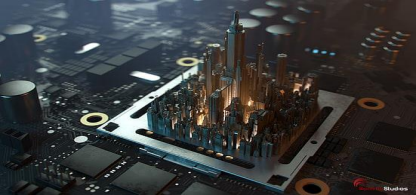
History: Source of Evolution:
-
Von Neumann Design:
In 1951, a scientist John Von Neumann and his team proposed a design of stored program computer. Programs and data are stored in computer memory according to these designs. The computer reads the instructions one by one and executes them respectively.
It is very simple yet proved to be powerful and general-purpose. It is the basis of the most modern computer of today. Because of this, an advanced ecosystem for self-hosting computing has grown up around von Neumann architecture computers.
-
Evolution of Computer Architecture:
Computer architecture has evolved from large, bulky, room-sized machines by using vacuum tubes to small, compact & powerful devices with innumerable features that have blown our minds. This evolution has been driven out from the advancements in technology leading from larger, slower to smaller, faster and more energy efficient systems.
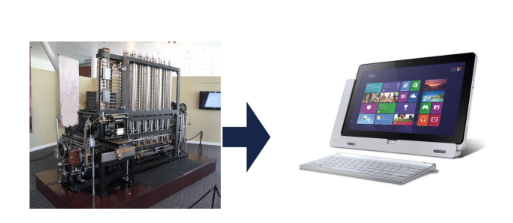
Exploring Key Components: Anatomy of Architecture: Central Processing Unit (CPU):
-
The Computer’s Brain:
Central Processing Unit (CPU) is known as the brain of the computer, the main and essential pivot of computer that processes the instructions given to the computer. A computer cannot work without a CPU. CPU is located on the motherboard. CPU performs all operations on data according to the given instructions. It executes instructions and tells other parts what to do. Most of the work consists of calculations and data transfer.
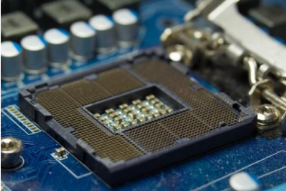
-
Key Components within CPU:

Control Unit:
The Control Unit acts like a supervisor of the computer as it controls all activities of the computer. It fetches instructions from the main memory, interprets it to find what operation is to be performed. It is an important component of CPU.
Arithmetic and Logic Unit (ALU):
ALU is a part of CPU in which actual execution of instructions take place in this part. The arithmetic unit of ALU performs basic arithmetic operations like addition, subtraction, multiplication and division. And the Logic Unit of ALU performs logical functions like comparing two data items to find which data part is greater than, less than or equal to other. Both arithmetic and logical operations are performed by ALU.
Registers:
The register is a small high-speed memory that is arranged inside the computer processor. It is utilized to store information and instructions briefly. Data is stored in registers from main memory for the data execution. CPU contains a number of registers and each of the registers has a predefined function. The storage of information and data in the registers depends upon its size.
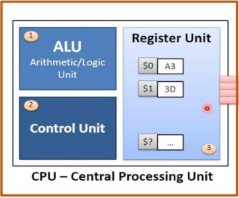
Main Memory:
Main memory, an important component of a computer system. It is used to store programs and data that are being executed. It is also known as a working area for computer systems. In modern computers, it is made in the form of a small chip that is made up of a material of semiconductor. The chip consists of millions of cells. Each cell stores one bit.
-
Key components of Main Memory:

RAM (Random Access Memory):
RAM stands for Random Access Memory. Random Access means that each individual byte in entire memory can be accessed directly. RAM is used to store data and instructions temporarily. RAM is a volatile memory. It means that its contents are lost when the power is turned off. CPU can read data from RAM and write data to RAM. It is also called direct access memory.
Cache Memory:
Cache Memory is a small and very fast memory that sits between the CPU and the main memory. It is designed for speeding up the transfer rate of data and instructions. It is faster than CPU. When a piece of data is requested again, it can be accessed quickly from the cache memory.
The data and the instructions that are used by the CPU are frequently stored in it. Cache memory improves the performance of the system by reducing the time. It also reduces bus traffic by reducing the frequency with which the processor needs to access the main memory.
ROM (Read Only Memory):
ROM stands for Read only Memory because it is not possible to write new instructions in the memory. Instructions can only be read but cannot be altered or cancelled. The instructions are stored by the manufacturer, and they are used to prepare the computer for use. ROM stores data and instructions permanently. When the system is switched off the instructions in the ROM are not lost. That’s why it is also known as a non-volatile memory.
I/O unit (Input-Output Devices:
-
Role of I/O unit in computer:
The I/O unit is an important component of a computer system. It is the hardware that allows a user to interact with a computer, such as keyboards, mice, printers, and monitors. These devices are different from one another in their organization.
The data transfer rates handled by these devices are also different. They support different formats of data. Due to the differences between them, it is not possible to connect all these devices with the system bus directly.
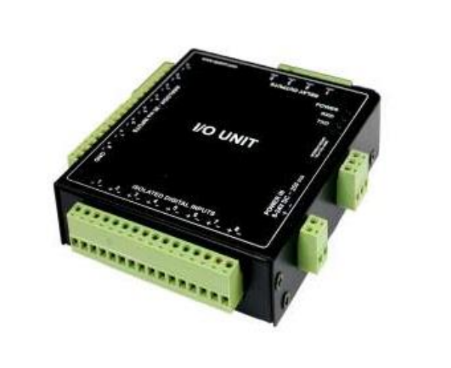
Conclusion:
Computer architecture has evolved dramatically since the early days of computing. From the foundational von Neumann model to today’s multi-core and specialized processors, each advancement has pushed the boundaries of performance and efficiency. It is a field of study that is constantly evolving to meet the needs of modern computing applications. It has a significant impact on the performance, efficiency, and functionality of computer systems.
Read blog: https://blogistrohub.com/


Excellent blog here Also your website loads up very fast What web host are you using Can I get your affiliate link to your host I wish my web site loaded up as quickly as yours lol SLOT DANA GOPAY